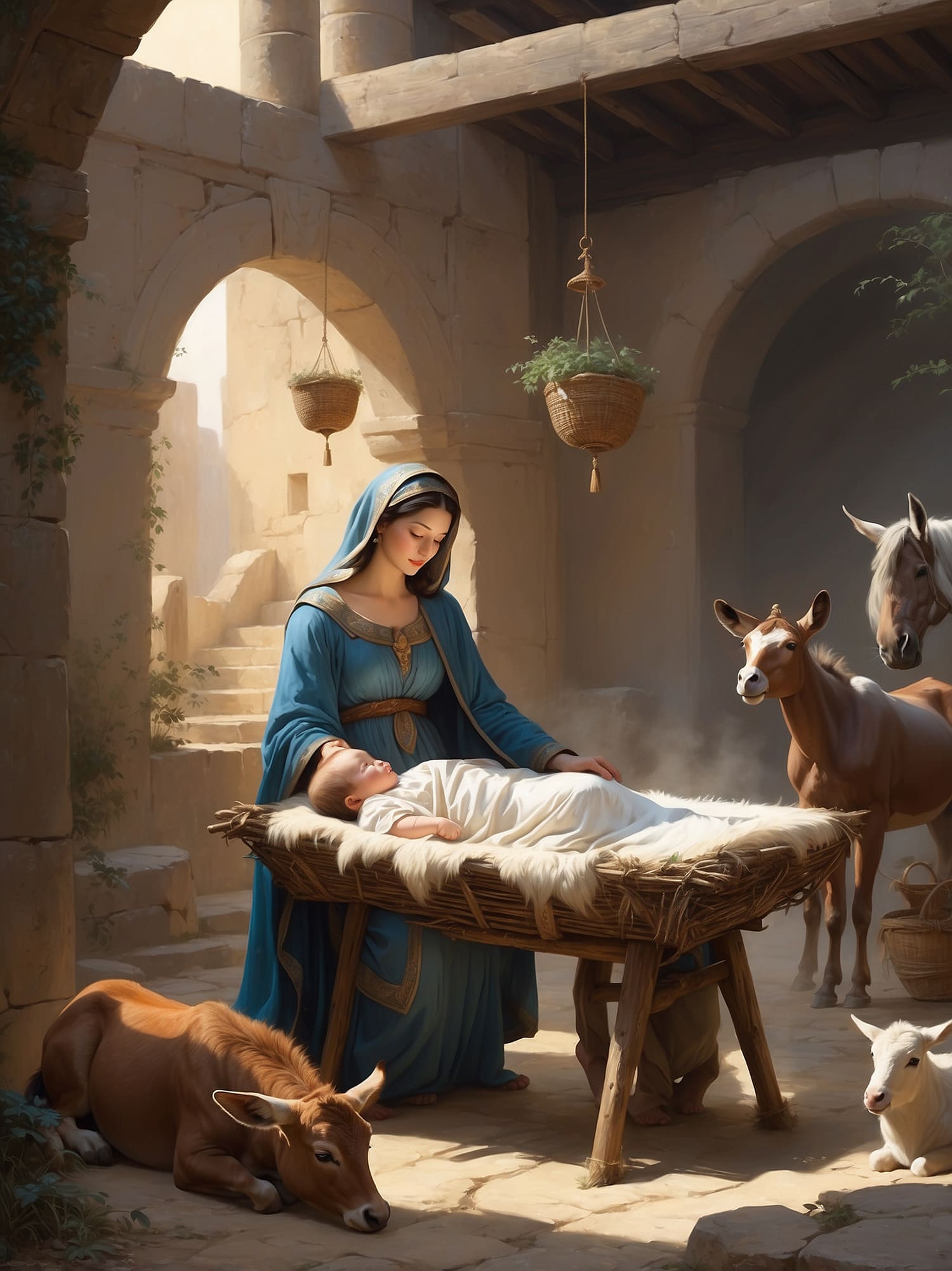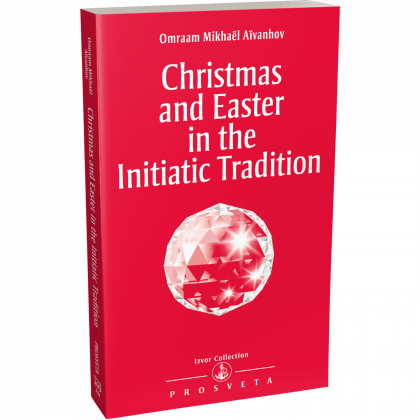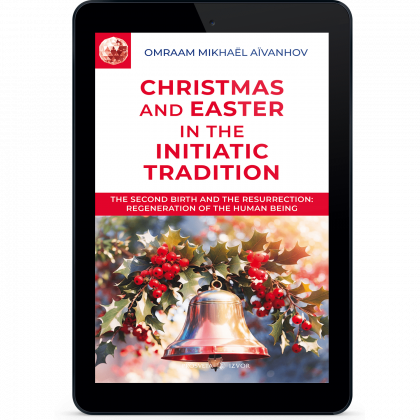The life-giving inner forces of the donkey and the ox
Mastery of two forms of energy
'...When Mary and Joseph sought refuge in the inn, they found that there was no room for them… But then he finds a stable, and stable and manger are also symbols; symbols, first and foremost of poverty and difficult material circumstances. Yes, for someone in whom the Spirit dwells, this will always be the way: people will not appreciate them and will refuse to let them in to their homes. But thanks to the Light that radiates from them and shines above the manger, others will see them and come to them from afar.
And now let’s look at the question of the stable: in this stable there were no sheep and no shepherds, only an ox and a donkey. Why was this? For centuries, humans have been repeating this story without understanding it because they have lost the universal symbolism. The stable represents our physical body. And what does the ox represent? Well, you know that in ancient civilizations the ox or bull was seen as the generative principle. In ancient Egypt, for instance, Apis the bull was the symbol of fertility and fecundity. The bull is ruled by Venus and represents sexual energy. The donkey, on the other hand, is ruled by Saturn and represents the personality, our lower nature, the ‘old Adam’, who is obstinate and headstrong but a good servant. And these two beasts were there to serve Jesus.
But how could they serve him? Well, this is where I am going to reveal a great mystery to you.
When people first begin to work seriously to become better people, they come into sharp conflict with the forces of their personality and sensuality. An initiate is someone who has achieved the mastery of these two kinds of energy and knows how to put them to good use. They are not exterminated, you see; nowhere does it say that these two beasts were driven off or slaughtered: they remained there, in the stable. But what were they doing there? They were warming the infant Jesus with their breath. And this means that when an initiate manages to transmute their inner ox and donkey and make them servants, the ox and donkey keep the new-born babe in them warm and nourished with their breath. Their energies are no longer a source of suffering and no longer torment them and knock them off balance: they become life-giving inner forces.
Breath is a sign of life, and the breath of the ox and donkey is a reminder of that breath through which God breathed a soul into the first human being. The ox and the donkey served the child Jesus, and this means that all those in whom Christ dwells will be served by their personality and their sensuality, for these two forces can be extraordinarily useful once we know how to harness them to a task.'
'...When Mary and Joseph sought refuge in the inn, they found that there was no room for them… But then he finds a stable, and stable and manger are also symbols; symbols, first and foremost of poverty and difficult material circumstances. Yes, for someone in whom the Spirit dwells, this will always be the way: people will not appreciate them and will refuse to let them in to their homes. But thanks to the Light that radiates from them and shines above the manger, others will see them and come to them from afar.
And now let’s look at the question of the stable: in this stable there were no sheep and no shepherds, only an ox and a donkey. Why was this? For centuries, humans have been repeating this story without understanding it because they have lost the universal symbolism. The stable represents our physical body. And what does the ox represent? Well, you know that in ancient civilizations the ox or bull was seen as the generative principle.
In ancient Egypt, for instance, Apis the bull was the symbol of fertility and fecundity. The bull is ruled by Venus and represents sexual energy. The donkey, on the other hand, is ruled by Saturn and represents the personality, our lower nature, the ‘old Adam’, who is obstinate and headstrong but a good servant. And these two beasts were there to serve Jesus.
But how could they serve him? Well, this is where I am going to reveal a great mystery to you.
When people first begin to work seriously to become better people, they come into sharp conflict with the forces of their personality and sensuality. An initiate is someone who has achieved the mastery of these two kinds of energy and knows how to put them to good use. They are not exterminated, you see; nowhere does it say that these two beasts were driven off or slaughtered: they remained there, in the stable. But what were they doing there? They were warming the infant Jesus with their breath. And this means that when an initiate manages to transmute their inner ox and donkey and make them servants, the ox and donkey keep the new-born babe in them warm and nourished with their breath. Their energies are no longer a source of suffering and no longer torment them and knock them off balance: they become life-giving inner forces.
Breath is a sign of life, and the breath of the ox and donkey is a reminder of that breath through which God breathed a soul into the first human being. The ox and the donkey served the child Jesus, and this means that all those in whom Christ dwells will be served by their personality and their sensuality, for these two forces can be extraordinarily useful once we know how to harness them to a task.'



